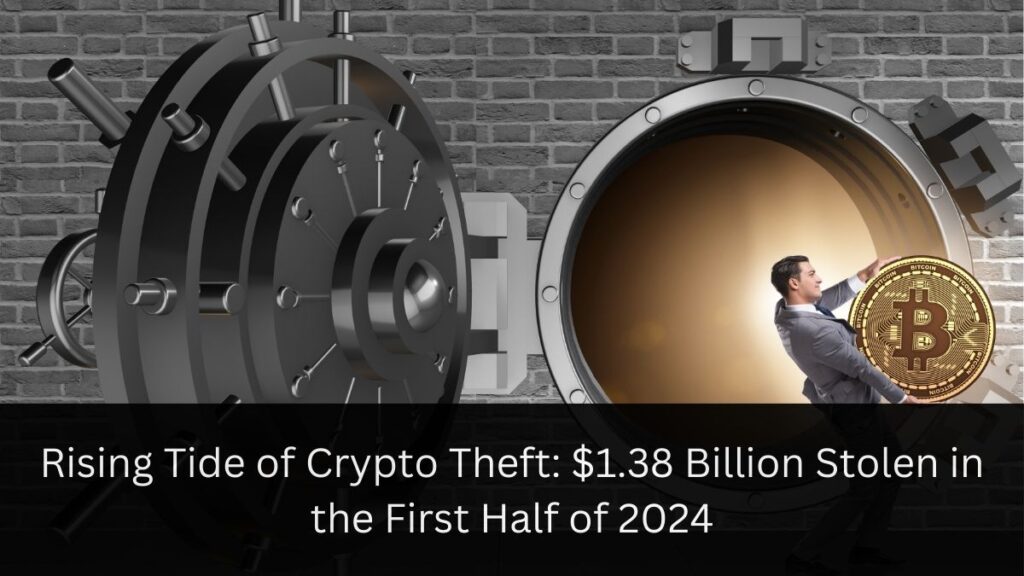The cryptocurrency world has experienced significant growth over the past decade, but this expansion has not been without challenges. One of the most pressing issues is the rise in cybercrime targeting digital assets. According to a recent report by TRM Labs, stolen cryptocurrency more than doubled to $1.38 billion in the first half of 2024. This alarming trend underscores the urgent need for enhanced security measures in the crypto industry.
The Surge in Crypto Theft
Alarming Statistics
TRM Labs’ report reveals a dramatic increase in the value of stolen crypto, highlighting the vulnerabilities in current security frameworks. This surge in theft is not just a number; it represents the loss of significant investments for individuals and businesses alike. To put this into perspective, the $1.38 billion stolen in just six months is more than double the amount lost during the same period in 2023.
Factors Contributing to the Increase
Several factors have contributed to this rise in crypto theft. First, the increasing value of cryptocurrencies makes them an attractive target for cybercriminals. As the market capitalization of digital assets grows, so does the incentive for hackers to develop more sophisticated methods of theft.
Second, the decentralized nature of cryptocurrencies means that once stolen, it is challenging to trace and recover these assets. Unlike traditional financial systems, where institutions can intervene and reverse transactions, the blockchain’s immutable ledger records transactions permanently, making recovery nearly impossible.
Case Studies: High-Profile Thefts
One notable example of this trend is the attack on a major DeFi (Decentralized Finance) platform earlier this year, where hackers exploited a vulnerability in the smart contract code to siphon off $200 million worth of digital assets. Another significant incident involved a phishing scheme targeting users of a popular crypto exchange, resulting in the theft of over $100 million in various cryptocurrencies.
Strengthening Security Measures
The Role of Exchanges
Crypto exchanges play a crucial role in safeguarding digital assets. To combat the rising tide of theft, these platforms must implement robust security protocols. This includes multi-factor authentication (MFA), cold storage solutions for the majority of assets, and regular security audits. Exchanges that fail to prioritize security not only risk losing their customers’ assets but also their trust.
Advances in Blockchain Security
Innovations in blockchain technology can also enhance security. For instance, multi-signature wallets require multiple private keys to authorize a transaction, making it harder for hackers to gain complete control. Similarly, implementing zero-knowledge proofs can help protect user data while still allowing for transaction verification.
Regulatory Measures
Government regulations can further bolster security in the crypto space. By establishing clear guidelines and standards for the storage and transfer of digital assets, regulators can help create a safer environment for investors. Additionally, international cooperation is essential to track and prosecute cybercriminals who operate across borders.
Personal Insights: Navigating the Crypto Landscape
As someone who has been involved in the crypto space since its early days, I have witnessed the evolution of both technology and threats. I remember the excitement of my first Bitcoin transaction, a moment filled with the promise of a decentralized future. However, that optimism is now tempered with caution as the risks have become more apparent.
One of my close friends, a fellow crypto enthusiast, fell victim to a phishing attack last year. Despite taking numerous precautions, a single lapse led to the loss of his hard-earned digital assets. This personal experience underscores the importance of staying vigilant and continuously updating security practices.
The Broader Impact on the Crypto Industry
Trust and Adoption
The increase in crypto theft poses a significant threat to the broader adoption of digital currencies. Trust is a foundational element for any financial system, and frequent reports of theft can deter new users from entering the market. To foster wider adoption, the industry must address these security concerns head-on.
Economic Implications
The economic implications of crypto theft are far-reaching. When large sums are stolen, it can lead to market volatility and a loss of confidence among investors. This, in turn, can affect the valuation of cryptocurrencies and disrupt the broader financial ecosystem. Ensuring robust security measures can help stabilize the market and protect investor interests.
Innovations in Security
Despite the challenges, the threat of theft has also spurred innovation in security technologies. Companies are investing in advanced encryption methods, AI-powered threat detection systems, and decentralized security solutions. These innovations not only protect digital assets but also push the boundaries of what is possible in the field of cybersecurity.
Conclusion: A Call to Action
The doubling of stolen cryptocurrency to $1.38 billion in the first half of 2024 is a wake-up call for the industry. It highlights the urgent need for enhanced security measures, regulatory oversight, and continuous innovation. For investors, it serves as a reminder to remain vigilant and proactive in protecting their digital assets.
The crypto industry stands at a crossroads. While the potential for growth and innovation is immense, so too are the risks. By addressing these challenges head-on and fostering a culture of security, the crypto community can pave the way for a safer and more prosperous future.
In the end, the responsibility lies with all stakeholders—exchanges, developers, regulators, and investors—to create a secure and resilient ecosystem. Let this be a call to action for everyone involved in the crypto space to prioritize security and work together to safeguard the future of digital assets.

